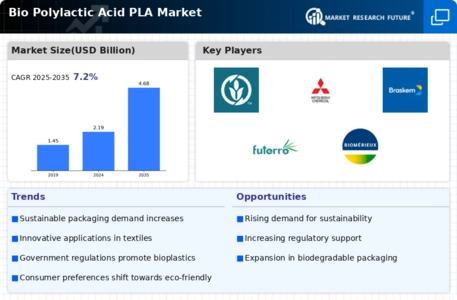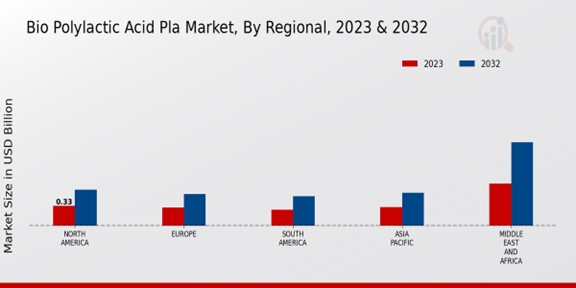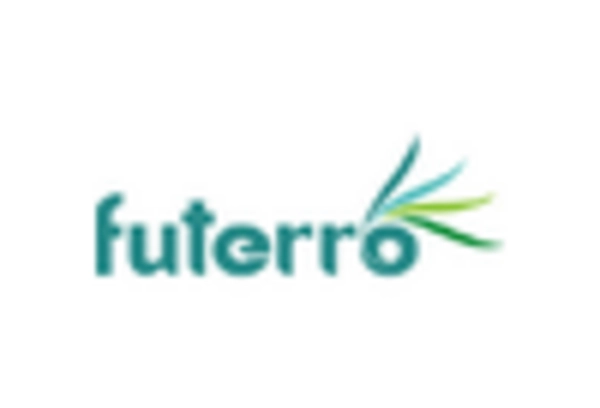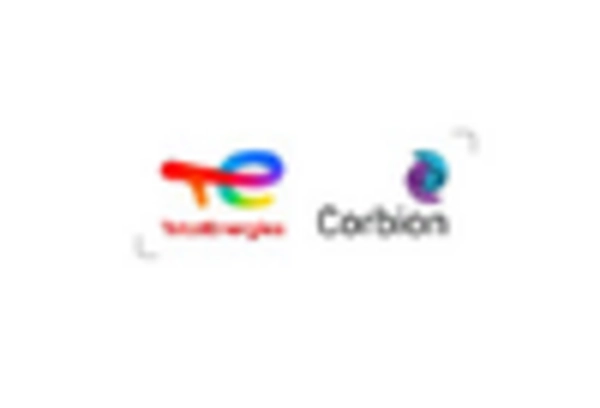Supportive Regulatory Frameworks
Regulatory bodies are increasingly implementing policies that favor the use of biodegradable materials, including PLA. These regulations often include incentives for companies that adopt sustainable practices, thereby promoting the Bio Polylactic Acid PLA Market. In 2025, several regions are expected to introduce stricter regulations on single-use plastics, which will likely boost the demand for PLA as a viable alternative. This regulatory support is crucial for the growth of the market, as it encourages manufacturers to transition towards more sustainable materials, aligning with global sustainability goals.
Innovations in Production Technologies
Technological advancements in the production of Bio Polylactic Acid PLA are enhancing efficiency and reducing costs. Innovations such as improved fermentation processes and the use of renewable resources are making PLA more accessible to manufacturers. The Bio Polylactic Acid PLA Market benefits from these advancements, as they enable the production of high-quality PLA at competitive prices. As of 2025, the production capacity of PLA is expected to increase by 15%, driven by these technological improvements. This growth not only supports the expansion of the market but also encourages further investment in research and development.
Expanding Applications Across Industries
The versatility of Bio Polylactic Acid PLA is leading to its adoption across various industries, including packaging, textiles, and automotive. This broad applicability is a key driver for the Bio Polylactic Acid PLA Market, as it opens new avenues for growth. In 2025, the packaging sector is anticipated to account for over 60% of the PLA market, reflecting the material's suitability for food packaging and consumer goods. The expansion into new applications not only diversifies the market but also enhances the overall demand for PLA products, fostering innovation and development.
Rising Demand for Biodegradable Materials
The increasing awareness regarding environmental sustainability drives the demand for biodegradable materials, particularly in the packaging sector. As consumers become more environmentally conscious, they seek alternatives to traditional plastics. The Bio Polylactic Acid PLA Market is witnessing a surge in demand as companies strive to meet consumer preferences for eco-friendly products. In 2025, the market for biodegradable plastics is projected to reach approximately USD 10 billion, with PLA accounting for a significant share. This trend indicates a shift towards sustainable practices, compelling manufacturers to innovate and expand their product lines to include PLA-based solutions.
Consumer Preference for Sustainable Products
There is a notable shift in consumer preferences towards sustainable products, which is significantly impacting the Bio Polylactic Acid PLA Market. As consumers increasingly prioritize eco-friendly options, companies are compelled to adapt their offerings to align with these values. In 2025, surveys indicate that over 70% of consumers are willing to pay a premium for sustainable packaging solutions, which directly benefits the PLA market. This consumer-driven demand encourages manufacturers to invest in PLA production, thereby driving market growth and fostering a culture of sustainability within the industry.


















Leave a Comment